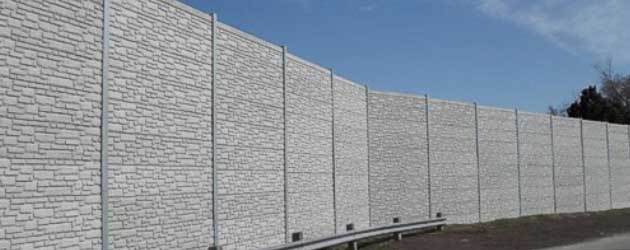Noise Barrier Material Testing

Location: Seaforth, Ontario, Canada
Client: Design Concrete Systems
Design Concrete Systems is an Ontario-based leading manufacturer of noise barriers and retaining walls. They were in the process of developing a new noise barrier wall system and contracted HGC to conduct sound absorption tests on approximately 30 different formulations of cementitious, wood fibre, absorptive facing. The purpose of these tests was to identify the sound absorption coefficient, a dimensionless number ranging from 0.0 to 1.0, representing the fraction of incident sound energy that is absorbed from the surfaces of the materials sampled.
These preliminary tests helped them to narrow down the sample selection to a handful that could then undergo full-scale testing in a reverberation chamber. The tests were conducted at HGC by means of an “impedance tube,” following the methods of ASTM Standard E1050. A small sample of the material to be tested was placed inside one end of the tube, against a rigid backing, and was bombarded with sound from a loudspeaker at the other end of the tube. A special pair of microphones mounted in the tube wall measured the sound levels at two positions in the tube, so that the incident and reflected sound waves could be separated by a digital analyzer.
The measured result is called the “normal incidence absorption coefficient” as all of the sound strikes the material perpendicular to its surface. This method provides results that strictly represent the absorptivity for sound impinging perpendicular to the surface. However, the “random incidence absorption coefficient,” which considers sound from all angles of incidence, can be calculated from the measured value using published equations. The final results were presented in the form of a Noise Reduction Coefficient (“NRC”), a single-number descriptor of sound absorption, for both the normal and random incidence results.
Acoustical consulting services delivered:
- Sound Absorption Testing
- Acoustical Design Assistance
- Acoustical Property Optimization
